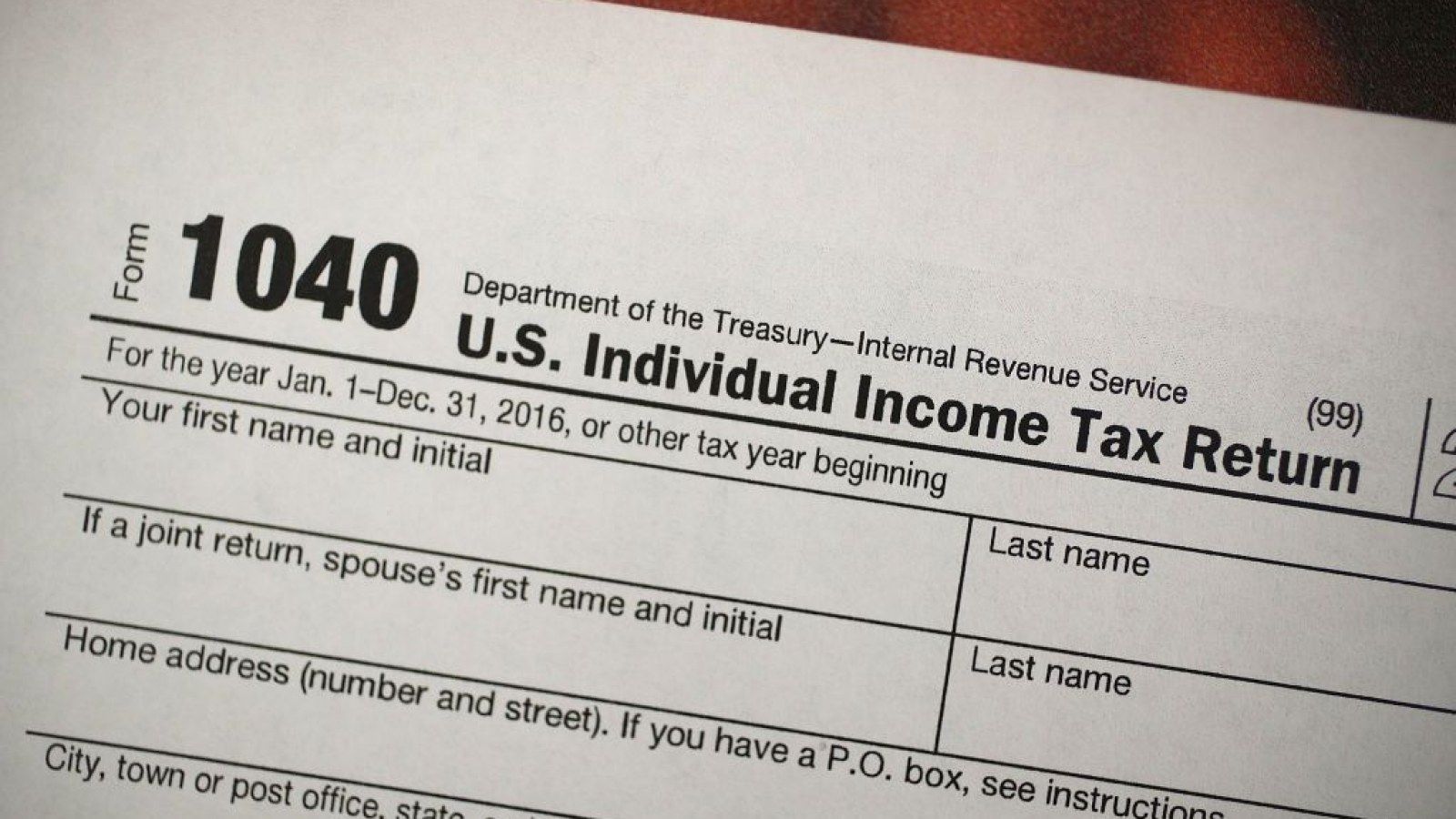

Finance
When IRS Open In 2018
Published: November 1, 2023
Find out when the IRS will open in 2018 and stay on top of your finances. Plan ahead and ensure you meet your tax obligations with ease.
(Many of the links in this article redirect to a specific reviewed product. Your purchase of these products through affiliate links helps to generate commission for LiveWell, at no extra cost. Learn more)
Table of Contents
Introduction
Every year, millions of taxpayers eagerly anticipate the opening of the IRS to file their tax returns and fulfill their financial obligations to the government. The Internal Revenue Service (IRS) is responsible for administering and enforcing the federal tax laws of the United States.
Understanding the important dates and deadlines associated with the IRS’s opening is crucial for individuals and businesses alike. Whether you are a taxpayer seeking clarity on when to file your individual tax return or a business owner in need of information on when business tax returns can be submitted, this article will provide you with the essential details for the 2018 tax filing season.
It is important to note that the dates and deadlines mentioned in this article are specific to the 2018 tax year. It is always advisable to consult the IRS website or a tax professional for the most up-to-date information and any changes in the tax laws.
Now, let’s dive into the important dates and deadlines associated with the opening of the IRS in 2018.
Important Dates and Deadlines
When it comes to filing tax returns, being aware of the important dates and deadlines can help you avoid penalties and ensure a smooth process. Here are the key dates to keep in mind for the 2018 tax filing season:
- January 1, 2018: The tax year 2018 officially begins, and you can start preparing your tax documents and gathering necessary information.
- January 29, 2018: The IRS begins accepting electronically filed tax returns, both individual and business.
- April 17, 2018: This is the deadline for filing your individual tax return (Form 1040) for the tax year 2017. It is important to note that the usual April 15 deadline is extended to April 17 in 2018 due to the observance of Emancipation Day in Washington, D.C. on April 16.
- October 15, 2018: If you filed for an extension for your individual tax return, this is the final deadline to submit your return.
It’s important to be mindful of these dates to avoid any late filing penalties or interest charges. Filing your tax return on time ensures that you remain in compliance with the tax laws and helps expedite any potential refunds.
Opening Date for Individual Tax Returns
The opening date for individual tax returns is an eagerly awaited milestone for taxpayers. It marks the beginning of the tax filing season and when individuals can start submitting their tax returns to the IRS. For the 2018 tax year, the opening date for individual tax returns was January 29, 2018.
Prior to this date, individuals could start preparing their tax documents and gathering the necessary information to complete their tax returns. This includes documents such as W-2 forms from employers, 1099 forms for additional income, and any other relevant financial records.
It is important to note that while the IRS begins accepting electronically filed tax returns on the opening date, paper returns can also be submitted. However, electronic filing is typically faster, more accurate, and often results in faster refunds.
Once the individual tax returns are submitted, taxpayers can choose to receive their refunds through direct deposit, which provides the fastest refund delivery method. Alternatively, taxpayers can opt to receive their refunds by mail in the form of a check.
It is crucial for individuals to file their tax returns in a timely and accurate manner to avoid penalties. Filing early can also provide peace of mind and ensure any potential refund is received promptly.
Next, let’s explore the opening date for business tax returns, which is equally important for business owners and organizations.
Opening Date for Business Tax Returns
Businesses, both small and large, have specific tax filing responsibilities. Understanding the opening date for business tax returns is crucial for business owners and organizations to meet their tax obligations. For the 2018 tax year, the opening date for business tax returns varied depending on the type of business entity:
- Sole Proprietorships and Single-Member LLCs: For businesses operating as sole proprietorships or single-member limited liability companies (LLCs), the opening date for business tax returns was January 29, 2018. These businesses report their income and expenses on Schedule C, which is included in their individual tax return (Form 1040).
- Partnerships and S-Corporations: For partnerships and S-corporations, the opening date for business tax returns was also January 29, 2018. These entities are pass-through entities, meaning they do not pay taxes at the entity level. Instead, the income or loss is passed through to the partners or shareholders who report it on their individual tax returns.
- C-Corporations: The opening date for business tax returns for C-corporations was different from other business entities. Starting from the 2018 tax year, the IRS implemented changes to the due date for C-corporation tax returns. The opening date for C-corporation tax returns changed to April 2, 2018. Previously, the opening date for C-corporations was March 15.
It’s important for business owners to note these opening dates and ensure that they have all the necessary documents and records ready to file their business tax returns accurately and on time. Failure to file or late filing can result in penalties and additional interest charges.
Now that we’ve covered the opening dates for both individual and business tax returns, let’s explore the filing deadlines for these returns.
Filing Deadlines for Individual Tax Returns
When it comes to filing individual tax returns, it’s crucial to be aware of the deadlines to ensure compliance with the tax laws and avoid penalties. The filing deadlines for individual tax returns depend on various factors, including the type of taxpayer and whether an extension request has been filed.
For the 2018 tax year, the deadline for filing individual tax returns for most taxpayers was April 17, 2018. The usual deadline of April 15 was extended to April 17 due to the observance of Emancipation Day in Washington, D.C. on April 16.
It’s important to note that taxpayers who need additional time to file their individual tax returns can request an extension. By filing Form 4868, “Application for Automatic Extension of Time to File U.S. Individual Income Tax Return,” before the original deadline, taxpayers can receive an automatic extension of six months. However, it’s essential to remember that the extended deadline is for filing the return, not for paying any taxes owed. Any tax liability must still be paid by the original deadline to avoid penalties and interest.
For individuals who have filed for an extension, the final deadline to submit the tax return is October 15, 2018. It’s important to complete and submit the tax return accurately and in a timely manner to avoid any additional penalties or interest charges.
Keep in mind that different rules may apply to specific situations, such as taxpayers living abroad or those affected by natural disasters, so it’s always advisable to consult the IRS website or a tax professional for specific filing deadlines and requirements.
Next, let’s explore the filing deadlines for business tax returns.
Filing Deadlines for Business Tax Returns
Businesses have unique filing deadlines for their tax returns, depending on the type of business entity and its fiscal year. It’s crucial for business owners to be aware of these deadlines to ensure compliance and avoid penalties. Let’s explore the filing deadlines for different types of business tax returns for the 2018 tax year:
- Sole Proprietorships and Single-Member LLCs: For businesses operating as sole proprietorships or single-member limited liability companies (LLCs), the filing deadline is typically the same as the individual tax return deadline. For the 2018 tax year, the deadline was April 17, 2018. Business income and expenses are reported on Schedule C, which is included in the owner’s individual tax return (Form 1040).
- Partnerships and S-Corporations: Partnerships and S-corporations have a different filing deadline. For the 2018 tax year, the deadline to file business tax returns for partnerships (Form 1065) and S-corporations (Form 1120S) was March 15, 2018. However, for the 2018 tax year, the IRS provided a new option allowing certain partnerships to request a six-month extension, moving the filing deadline to September 17, 2018.
- C-Corporations: The filing deadline for C-corporations has undergone a change for the 2018 tax year. The deadline to file C-corporation tax returns (Form 1120) is now April 17, 2018. Previously, the deadline was March 15. C-corporations with a fiscal year ending on June 30 have until September 17, 2018, to file their tax returns.
It’s important for business owners to be mindful of these deadlines and ensure that all necessary documents and tax forms are filed accurately and on time. Late filing or failure to file can result in penalties and interest charges.
Remember that specific rules and deadlines may apply in certain situations, such as fiscal year-end changes or businesses affected by natural disasters. For detailed information, it is always recommended to consult the IRS website or a tax professional knowledgeable in business tax matters.
Now that we’ve explored the filing deadlines for both individual and business tax returns, let’s discuss the changes to tax laws in 2018.
Changes to Tax Laws in 2018
The tax landscape can undergo changes from year to year, and it’s essential for individuals and businesses to stay informed about any updates to the tax laws. The year 2018 brought about significant changes to the tax code, impacting both individual taxpayers and businesses.
One of the notable changes was the implementation of the Tax Cuts and Jobs Act (TCJA), signed into law in December 2017. Some key provisions of the TCJA that took effect in 2018 include:
- Lower Tax Rates: The TCJA introduced new tax brackets and generally lowered tax rates for individuals. These lower tax rates were designed to reduce the tax burden on individual taxpayers.
- Increased Standard Deduction: The standard deduction for both single and married taxpayers increased significantly in 2018. This change means that many taxpayers may opt for the standard deduction rather than itemizing their deductions.
- Changes to Itemized Deductions: Several itemized deductions underwent changes under the TCJA. For example, the deduction for state and local taxes is now capped at $10,000, and the deduction for mortgage interest is limited for new mortgages taken on or after December 15, 2017.
- Pass-Through Business Deduction: The TCJA introduced a deduction for certain pass-through businesses, allowing eligible businesses to deduct up to 20% of their qualified business income.
- Corporate Tax Rate: One of the significant changes under the TCJA was the reduction in the corporate tax rate from 35% to a flat rate of 21%.
These are just a few examples of the changes brought about by the TCJA in 2018. It’s crucial for individuals and businesses to understand how these changes impact their tax situation and to consult with tax professionals for personalized guidance and advice.
For more information on the specific changes to the tax laws in 2018 and how they may affect you, it is recommended to review IRS publications or consult with a qualified tax professional.
Now, let’s explore some resources that can help taxpayers during the tax filing process.
Resources for Taxpayers
The tax filing process can be complex, but there are various resources available to help taxpayers navigate it with confidence. Whether you’re an individual taxpayer or a business owner, these resources can provide valuable information and assistance throughout the tax filing season.
Here are some key resources to consider:
- IRS Website: The official website of the Internal Revenue Service (IRS) offers a wealth of information, forms, publications, and resources to help taxpayers understand their rights and responsibilities. The website provides access to tax forms, online tools for e-filing and tracking refunds, clarification on tax laws, and answers to frequently asked questions.
- Tax Professionals: For personalized guidance and advice, consider consulting a tax professional. Certified Public Accountants (CPAs) or Enrolled Agents (EAs) can provide comprehensive tax planning, preparation, and filing services. They can help ensure that you optimize your deductions, take advantage of available credits, and remain compliant with tax laws.
- Tax Preparation Software: Software programs like TurboTax, H&R Block, and TaxAct offer user-friendly interfaces, step-by-step guidance, and interview-style questions to assist taxpayers in preparing and filing their tax returns accurately. These software programs often include features to help maximize deductions and ensure compliance with tax laws.
- Taxpayer Assistance Centers: The IRS operates Taxpayer Assistance Centers across the country where individuals can receive face-to-face assistance with their tax inquiries. These centers provide a range of services, including help with tax return preparation and assistance in resolving tax issues.
- Taxpayer Advocate Service: The Taxpayer Advocate Service (TAS) is an independent organization within the IRS that helps taxpayers resolve problems and navigate the tax system. They provide free assistance to taxpayers who are experiencing financial difficulties or who have not been able to resolve their tax issues through normal IRS channels.
These resources offer a wide range of support for taxpayers and can help ensure a smooth and accurate tax filing process. It is always advisable to utilize these resources and seek professional advice when needed to avoid errors and maximize your tax benefits.
By leveraging these resources, taxpayers can enhance their understanding of tax laws, maintain compliance, and make informed decisions regarding their tax obligations.
Now that we’ve explored the various resources available, you can confidently tackle the tax filing process.














